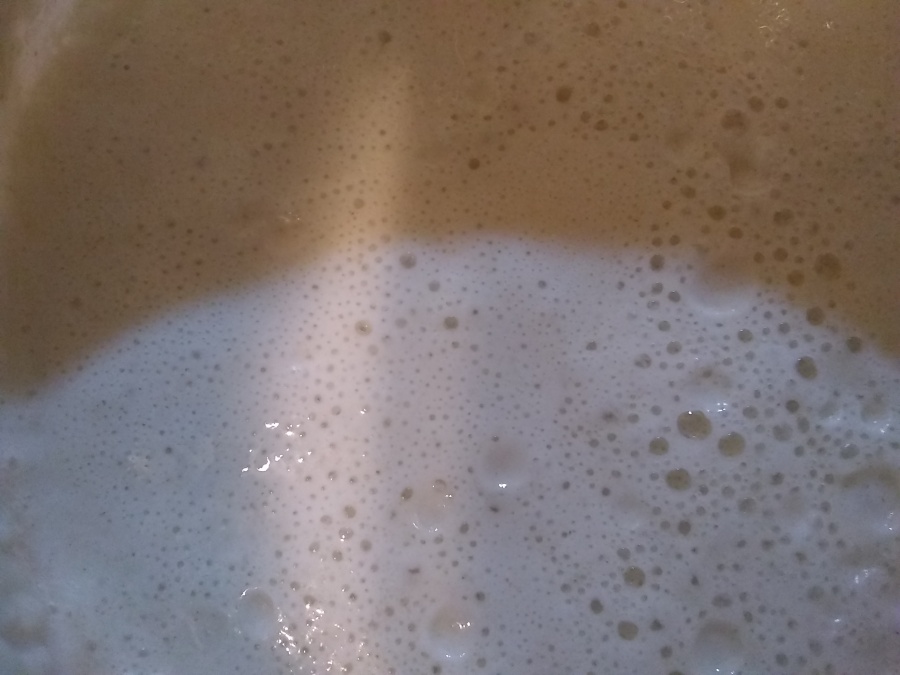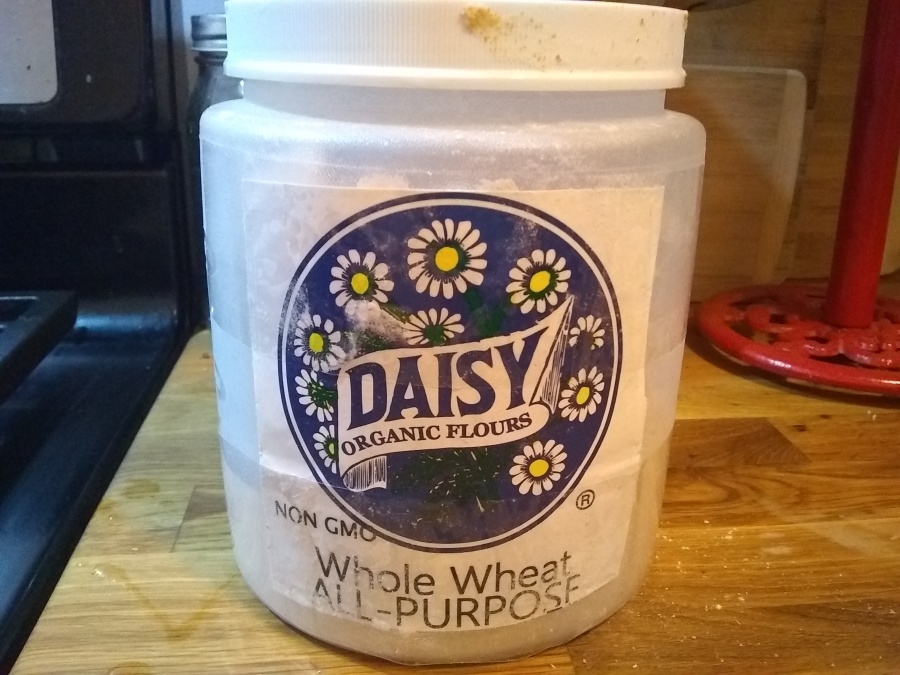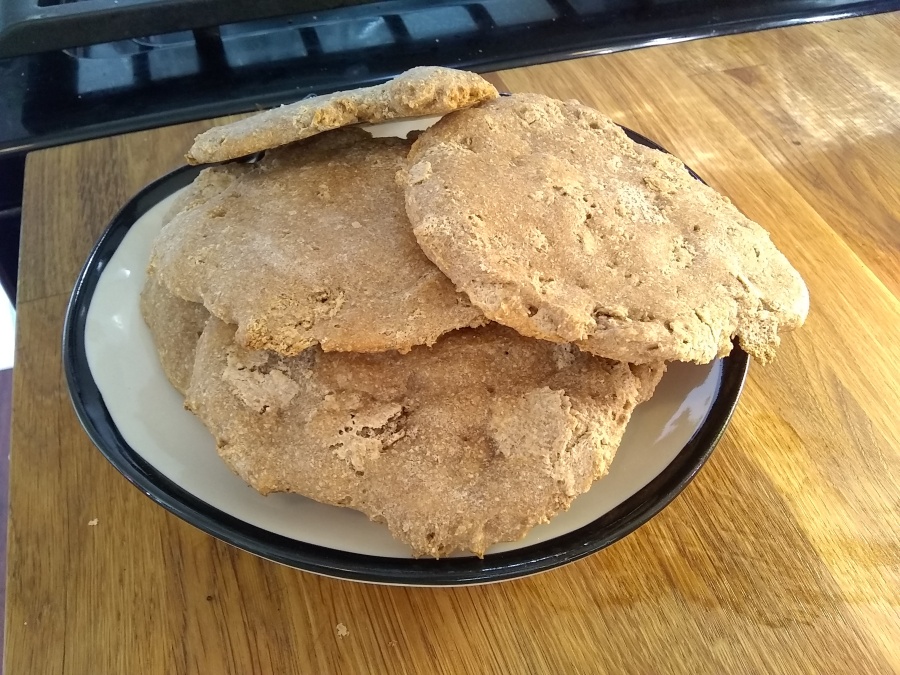I’ve been using the same sourdough starter for about 11 months. I got it from the Meyers Bageri bakery at Grand Central. This bakery will, by company policy, give a little tub of sourdough starter to anyone who asks, but they will want to make sure you understand, before they give it to you, that sourdough starter is a colony of microorganisms living in wet flour, not a prepared bread product.

While it’s kind of a waste to bake bread when I can find it in the trash, it is also a waste to have sourdough starter and not bake bread, because the dough has to be fed fresh flour and water at least once a week (if kept refrigerated, otherwise daily) to keep the yeast healthy. Continually feeding and not baking means more of the starter has to be disposed of. This means every time I bake some kind of bread I try to make a sourdough variation. Most of the time I add some commercial yeast because pure sourdough takes about twelve hours to rise, and you still get a nice flavor from the sourdough starter even when you speed up the process. Also, because I have a pound of yeast in my freezer, which I bought after a friend sent me a bread machine for my birthday last year.
In the past few weeks and sort of by coincidence, I have made tabouli and labneh, and I had only one left of a little bag of mini pita I dumpstered two weeks ago. There were actually dozens of bags of pita in the trash that day but I only took one because I didn’t think I’d need any more.

It’s generally considered a best practice to measure by weight when baking, but I don’t have a scale. My roommate uses a little kitchen scale to make precise pour over coffees, but when I tried to weigh my sourdough starter with it, it told me it was overweight. So I needed to find a recipe that used volumetric measurements. I got the recipe I’m using from PaulaG at Genius Kitchen.

It also uses whole wheat flour, which I also dumpstered about a month ago. There were at least a dozen two pound bags of regular whole wheat, whole wheat pastry flour, and unbleached white flour that I could have taken, but they would have been too heavy to take home so I only got a few.

The kneaded dough was covered and left on my radiator to rise around 9pm. By 9am the next morning it had definitely risen, but it didn’t look right. The dough had formed a dry crust on top and was very sticky underneath. I had let dough rise this long once before without this issue, but it had been inside the pan of a bread machine, not a large shallow bowl. The episode of “The Great British Baking Show” about pita hadn’t prepared me for this.

I wasn’t able to shape it into neat flattened balls because the dough was still too wet, and bits of crusty stuff were mixed into each piece.

So I did the best I could to shape it into sad little patties. I baked them at 450°F for 3 minutes, but they didn’t puff up or look like they were cooking, so I kept adding more time until they had been in for ten minutes. They never puffed up, which meant the pitas wouldn’t have pockets. I just hoped they wouldn’t turn into dry hard little crackers.

The result was not that pretty, and the bottoms were hard, but they were actually pretty soft inside and had a good strong tangy sourdough flavor. And they didn’t stick to the pan. Paul Hollywood would be disappointed in me for sure, but as far as I’m concerned if you screw up a recipe for bread and the end result is good enough not to throw out, that’s a success.

I had some olives from a few weeks ago, too, so I was able to fix myself a nice little meze plate.
